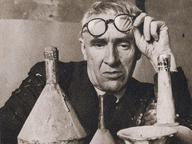Henraux Collection 1960-1970

From 10 June 2022 to 17 July 2022
Milan
Place: Gallerie d’Italia Milan
Address: Piazza della Scala 6
Times: Martedì, mercoledì, venerdì, sabato e domenica dalle 9:30 alle 19:30. Giovedì dalle 9:30 alle 22:30. Lunedì chiuso. Ultimo ingresso un’ora prima della chiusura
Responsibles: Edoardo Bonaspetti
Ticket price: intero € 10, ridotto € 8, Under 26 e Clienti Gruppo Intesa Sanpaolo € 5. Gratuito Under 18 e scolaresche
Telefono per informazioni: 800.167619
E-Mail info: info@gallerieditalia.com
Official site: http://www.gallerieditalia.com
The exhibition, staged in the evocative Octagonal Courtyard and in the Alessandro Garden of the Gallerie d’Italia in Milan, highlights seven of the twenty-five Henraux sculptures in the Intesa Sanpaolo collection. For the occasion, the entire group has undergone a major, cutting-edge conservation operation. This initiative is a taster for the high-profile exhibition that is due to be held in Querceta di Seravezza, at the headquarters of the Henraux Foundation, from 25 July to 18 September. The Milanese exhibition – starting with the showcasing of the seven Intesa Sanpaolo sculptures – presents documents, archival photographs, models and reproductions organised into themed groups, and encapsulates the vital context in which the sculptures were created, the genesis of the Henraux collection and the extraordinary exemplar of corporate culture provided by the company. The elements of the exhibition design are made from marble – the material extracted from the same quarries used by the artists at the time for their own sculptures – and are redolent of the creative processes whereby the raw material is fashioned into works of art, but also of a unique, virtuous relationship between nature, culture and industry.
Over the course of its more than 200 years in business, Henraux has been at the forefront of innumerable projects and collaborations in the field of international visual culture. Founded in 1821 by the former Napoleonic officer Jean Baptiste Alexandre Henraux and the Versilia-born entrepreneur Marco Borrini, the marble company’s history has been interwoven with important contributions to the worlds of art, architecture and restoration.
After the Second World War, the company began to establish an extraordinary relationship with the visual arts, under the far-sighted guidance of Erminio Cidonio, who in 1956 would take over at the helm. Against a tumultuous backdrop marked by emerging impulses and the need for renewal, Henraux redefined its corporate and cultural identity, making the most of Italy’s dynamism and artistic zeal to grasp the opportunities afforded by the combination of sculptural experimentation and industrial production. The 1957 meeting with the British sculptor Henry Moore, who had made his way to Versilia to create the monumental abstract work Reclining Figure, produced for the UNESCO headquarters in Paris, encouraged this approach and helped to give rise to a flourishing period of innovation and artistic research. In the space of a few years, Jean (Hans) Arp, Pietro Cascella, Rosalda Gilardi, Émile Gilioli, Jacques Lipchitz, Morice Lipsi, Joan Miró, Isamu Noguchi, Maria Papa Rostkowska, Giò Pomodoro, Antoine Poncet, Branko Ružić, François Stahly, Georges Vantongerloo and many others came to Querceta, a district within the municipality of Seravezza, in the province of Lucca, and made their sculptures using Henraux’s marble and its workforce, contributing to a wider cultural relaunch of the company and the surrounding area.
In the late 1960s and early ’70s, the vigour that had characterised this exceptional period began to tail off due to changes in company policy and, shortly after having been exhibited in 1972 in the showpiece courtyard of the Palazzo dei Diamanti in Ferrara, the collection was dispersed. In 1973, twenty-five works were sold to what was then the Banca Commerciale Italiana, under the enlightened chairmanship of Raffaele Mattioli, eventually flowing into what is today the collection of Banca Intesa Sanpaolo.
SCARICA IL COMUNICATO IN PDF

-
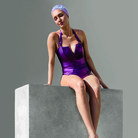 Dal 4 July 2025 al 21 September 2025
Roma | Palazzo Bonaparte
Dal 4 July 2025 al 21 September 2025
Roma | Palazzo Bonaparte
-
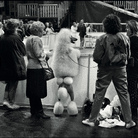 Dal 28 June 2025 al 21 September 2025
Roma | Palazzo Bonaparte
Dal 28 June 2025 al 21 September 2025
Roma | Palazzo Bonaparte
-
 Dal 24 June 2025 al 29 October 2025
Firenze | Museo Novecento
Dal 24 June 2025 al 29 October 2025
Firenze | Museo Novecento
-
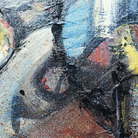 Dal 26 June 2025 al 18 July 2025
Firenze | Palazzo Sacrati Strozzi
Dal 26 June 2025 al 18 July 2025
Firenze | Palazzo Sacrati Strozzi
-
 Dal 26 June 2025 al 28 September 2025
Roma | Vittoriano - Sala Zanardelli
Dal 26 June 2025 al 28 September 2025
Roma | Vittoriano - Sala Zanardelli
-
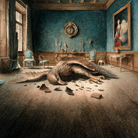 Dal 25 June 2025 al 26 October 2025
Bergamo | GAMeC
Dal 25 June 2025 al 26 October 2025
Bergamo | GAMeC
